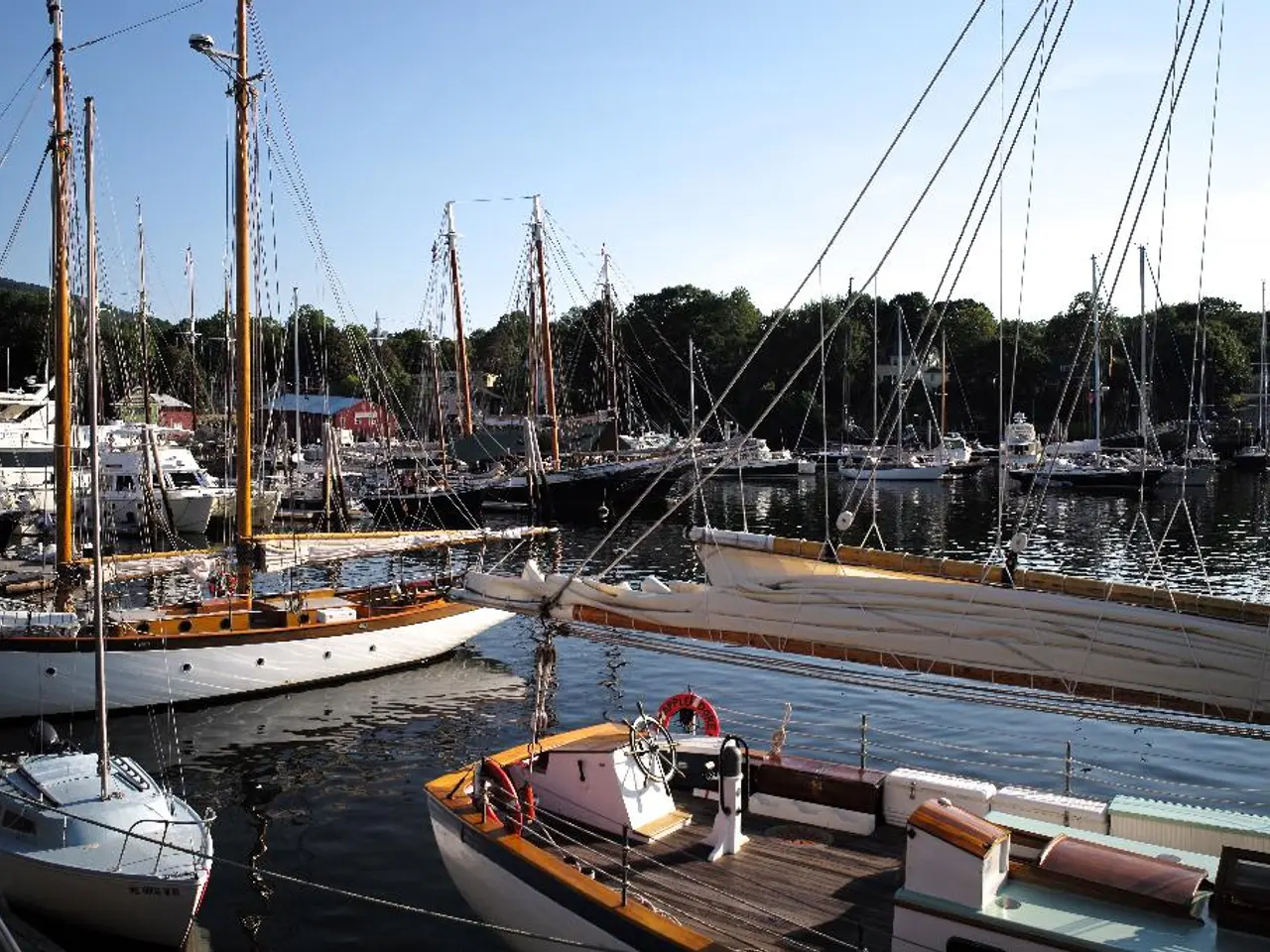Study 1: Exploration Vessel Tangaroa's Initial Mission
The RV Tangaroa, New Zealand's primary and only ice-strengthened deep-water research vessel, is a formidable vessel designed for scientific exploration in challenging environments such as the South Pacific, Southern Ocean, and Antarctica.
Role and Research Capabilities
This sophisticated platform serves as a hub for ocean science, environmental surveys, and marine engineering, supporting scientific research from the sea surface down through the water column to the seabed and sub-seabed layers. It enables detailed oceanographic studies, geological mapping, seabed sampling, and biological investigations, crucial for understanding marine ecosystems and polar environments.
The vessel has been actively involved in Antarctic research missions, such as the joint Italian/Australian Wilkes Land Glacial History Project (WEGA), demonstrating its role in glacial and climate-related Antarctic research.
Key Features and Equipment
The RV Tangaroa is equipped with a Dynamic Positioning (DP2) System, making it the only New Zealand vessel capable of maintaining a fixed position or precise tracking in the rough Southern Ocean, critical for sensitive oceanographic measurements. Its ice-strengthened hull enables safe operation in icy waters around Antarctica.
The vessel's propulsion and maneuvering capabilities include a 3000 kW main propulsion, an 800 kW stern thruster, a 600 kW bow thruster, and an 800 kW retractable azimuth thruster, providing high maneuverability and station-keeping ability.
For survey and sampling, the RV Tangaroa is equipped with a multibeam echosounder and sub-bottom profiler for hydrographic seabed mapping and geological imaging up to 200m below the seabed. It also has 35-tonne and 10-tonne A-frames for heavy lifting and deploying sampling gear, cone penetration testing and seabed drilling equipment for geological sampling, and Autonomous Underwater Vehicles (AUVs), Remotely-Operated Vehicles (ROVs), underwater cameras, and dive support systems for biological and physical oceanography.
Additional specialized equipment includes multi-channel seismic systems, airgun arrays, gravity meters, CTD systems, sonobuoys for acoustic research, and sound velocity profilers for oceanographic surveys. Various seabed sampling tools such as rock dredges and bottom corers are also on board.
Crew and Operation
Operated by NIWA Vessel Management Limited under the New Zealand flag, the ship’s crew includes highly trained marine engineers, oceanographers, geologists, and technical specialists capable of handling advanced scientific equipment and harsh oceanic conditions. Dynamic positioning and ice-strengthening enable prolonged research deployments in remote and difficult Antarctic regions.
The Ross Sea serves as the biggest research laboratory for the RV Tangaroa. The ship carries a maximum of 44 people, with 26 science personnel and the remainder being crew on a voyage to the Ross Sea.
In summary, the RV Tangaroa is a uniquely capable, ice-strengthened research vessel with advanced oceanographic, geophysical, and marine engineering equipment. It supports comprehensive scientific research, including Antarctic expeditions, offering precise positioning, sophisticated seabed mapping, and versatile sampling technologies critical for polar and deep-sea studies.
The RV Tangaroa's involvement in Antarctic research missions, such as the Wilkes Land Glacial History Project, showcases its significant role in climate-change and environmental-science studies. The vessel's data-and-cloud-computing capabilities, enabled by technology, enable researchers to analyze and store essential data collected during these missions, contributing to our understanding of polar environments and ocean science.




